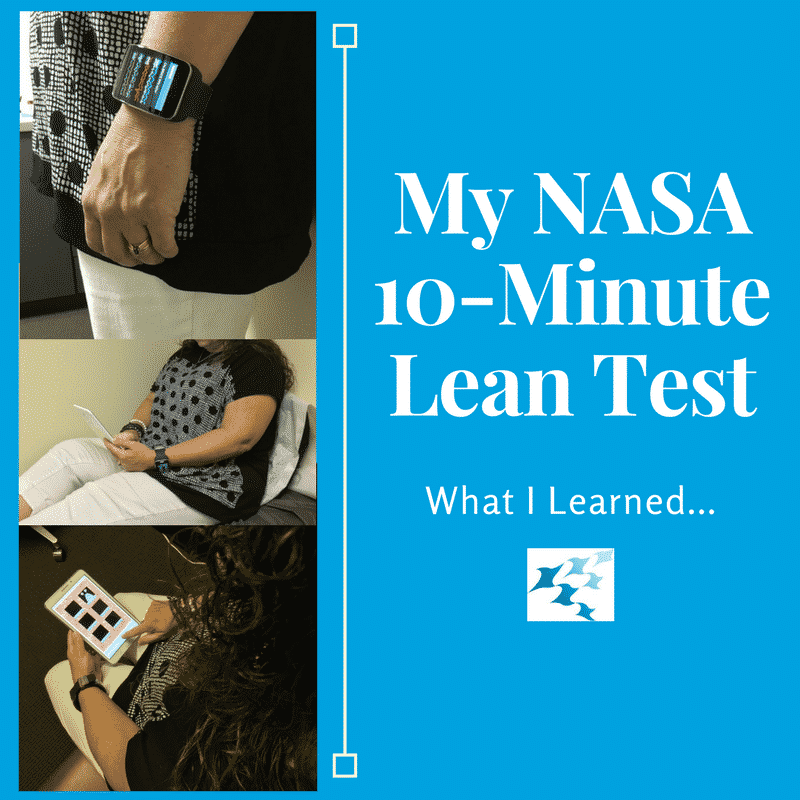- Written by a patient who participated in a BHC research study to validate a new protocol used to assess orthostatic intolerance. Here she shares what she unexpectedly learned from her NASA 10-Minute Lean Test at BHC
To be perfectly honest, when I decided to participate in the NASA Lean Test Research study at BHC, I thought to my self, “I’ll do it but I am sure I won’t learn anything.” After all, I have had CFS for 11 years and with all my medical tests, drug trials and ups and downs of this illness I consider myself an expert….and I will admit I have developed something of a “know it all” attitude.
But, since I really wanted to help the ME/CFS cause, I signed up for the study thinking I wouldn’t get much out of it….
How wrong I was!
The NASA Lean test is an inexpensive and simple way to assess orthostatic intolerance (OI) commonly seen in ME/CFS patients. OI reflects inadequate blood flow to the brain when sitting or standing upright and symptoms include, fatigue, nausea, lightheadedness, heart palpitations, sweating and fainting. For a detailed explanation see this recent blog HERE.
Typically OI is diagnosed with a tilt table test which is expensive, requires a lot of equipment and there are not many places that offer such testing. The NASA Lean test is easy to do and can be done anywhere with only a blood pressure cuff. I had an expensive tilt table test 6 years ago that confirmed my diagnosis of OI and since then my blood pressure and pulse seemed to be more normal on standing…or so I thought!
Here is what my NASA Lean Test was like:
- I was fitted with a simple wrist monitor, then laid down flat for ten minutes and had my blood pressure and heart rate taken. BP 126/69 and heart rate 69
- I was given an ipad and asked to perform some cognitive tests – they were really just like playing a few simple video games.
- Then I stood for 10 minutes and my blood pressure and pulse were taken every minute. BP ended up at 120/ 85 and heart rate 91. While standing, I recognized the familiar symptoms of starting to feel fidgety, a little wobbly/dizzy, etc.
- After standing and leaning, I sat and was asked to play the same simple ‘games’ on the ipad again.

When I saw the results, I thought—see, my blood pressure doesn’t crash like it did 6 years ago—I knew I wouldn’t learn anything! Wrong! I had been missing two important points!
First, my heart rate actually increased from 69 to 91 just from standing suggesting that I also still suffer from borderline POTS (Postural Orthostatic Tachycardia Syndrome)—a form of OI that causes the heart rate to increase—technically for a POTS diagnosis the increase in heart is 26 or higher—mine came in at 22.
Second, pulse pressure is the difference between upper and lower BP numbers. So my pulse pressure started at 57 (that is 126-69 from the first BP reading) but then dropped to 35 (that is 120-85—final BP reading). This drop suggests that less blood is circulating to the brain which may just be why I start to get dizzy when standing.
Learning about what is really going on when I am standing or sitting upright for too long has pushed me to focus more on the things I can do to alleviate these symptoms.
- Hydrate with electrolytes;
- prop feet up when sitting;
- take frequent rest breaks and lie flat;
- wear compression clothing.
All simple interventions that have made a difference in my stamina and thus activity level. Now I understand why long car rides can trigger a crash—too much time sitting upright! So I prop my feet up or lay down on the back seat….It makes a huge difference! What a blessing!
And, the great thing about the NASA Lean Test is that it can be repeated on a regular basis by my general practitioner to assess whether there have been any changes in how my body responds to being upright.
In addition to getting a better understanding of my underlying medical condition, here are a few things I learned from all of this:
- Kick the know it all attitude and stay open minded no matter how long you have had ME/CFS or how many tests you have had or how many doctors you have consulted. You never know where you next breakthrough with this illness will be!
- Participating in a research study is not a one way street. I got clarity on a key aspect of my illness that other physicians had not offered. Also, this study required me to fill out a number of questionnaires about symptoms, and in so doing I was forced to think systematically about how I am functioning and the activities that can trigger a crash. So even though some research studies do not provide you with test results as was the case with the NASA Lean test, the process of being evaluated through questionnaires/interviews can be really helpful.
- It made me feel great to contribute to a research study—knowing that my participation might help someone else is priceless. The added bonus was that the NASA Lean Test offered a $50 stipend—and I donated the money to BHC as a gesture of my deep appreciation for all they have done to advance ME/CFS research, education and clinical care!
______
Want to know more?
- Read our post detailing the NASA 10-Minute Lean Test instructions and access the free downloads that you can take to your physician – HERE
- Watch the video presentation that updates on the BHC NASA 10-Minute Lean Test research to validate this procedure – HERE

 Lucinda Bateman, MD, is a renowned clinician, researcher, and educator. Her Johns Hopkins University Medical School training instilled an approach to care that she has employed throughout her career - the patient comes first and the unknown or unexplained does not equate to a lack of proper and compassionate care. Since starting her own practice in 2000, she has served on six boards or committees, been the principal investigator for 45 studies, authored/coauthored 40 journal articles, served as adjunct instructor and adjunct assistant professor in the University of Utah Departments of Preventative Medicine, Internal Medicine, and Anesthesiology, and lectured around the world.
Lucinda Bateman, MD, is a renowned clinician, researcher, and educator. Her Johns Hopkins University Medical School training instilled an approach to care that she has employed throughout her career - the patient comes first and the unknown or unexplained does not equate to a lack of proper and compassionate care. Since starting her own practice in 2000, she has served on six boards or committees, been the principal investigator for 45 studies, authored/coauthored 40 journal articles, served as adjunct instructor and adjunct assistant professor in the University of Utah Departments of Preventative Medicine, Internal Medicine, and Anesthesiology, and lectured around the world.